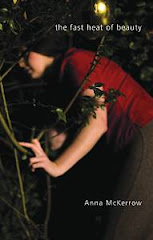I'm reading Italo Calvino's The Castle of Crossed Destinies, a novel based on interlocking stories generated by the tarot. A group of travellers chance to meet, first in a castle, then a tavern. their powers of speech are magically taken from them and instead they have only tarot cards with which to tell their stories. What follows is an exquisite interlinking of narratives, and a fantastic, surreal and chaotic history of all human consciousness.
Calvino adds a note at the end of the book as follows:
I publish this book to be free of it: it has obsessed me for years. I began by trying to line up tarots at random, to see if I could read a story in them. "The Waverer's Tale" emerged; I started writing it down; I looked for other combinations of the same cards; I realised the tarots were a machine for constructing stories; I thought of a book and I imagined it's frame: the mute narrators, the forest, the inn; I was tempted by the diabolical idea if conjuring up all the stories that could be contained in a tarot deck.
Tarot is in the public mind, the art mind. Suzanne Treister is just about to exhibit her art show, Hexen 2.0, at the Science Museum in London. The blurb from the official site is:
HEXEN 2.0 Suzanne Treister 2009-2011
HEXEN 2.0 is the sequel to HEXEN 2039 which imagined new technologies for psychological warfare through investigating links between the occult and the military in relation to histories of witchcraft, the US film industry, British Intelligence agencies, Soviet brainwashing and behaviour control experiments of the U.S. Army.
HEXEN 2.0 delves deeper into the histories of scientific research behind government programmes of mass control, investigating parallel histories of countercultural and grass roots movements. HEXEN 2.0 charts, within a framework of post-WWII U.S. governmental and military imperatives, the coming together of diverse scientific and social sciences through the development of cybernetics, the history of the internet, the rise of Web 2.0 and mass intelligence gathering, and the implications for the future of new systems of societal manipulation towards a control society.
HEXEN 2.0 specifically investigates the participants of the seminal Macy Conferences (1946-1953), whose primary goal was to set the foundations for a general science of the workings of the human mind. The project simultaneously looks at critics ofJ technological society such as Theodore Kaczynski/The Unabomber, the claims of Anarcho-Primitivism and Post Leftism, Technogaianism and Transhumanism and traces precursory ideas of Thoreau, Heidegger, Adorno and others in relation to visions of utopic/dystopic futures from science-fiction literature and film.
Based on actual events, people, histories and scientific projections of the future, and consisting of alchemical diagrams, a Tarot deck, photo-text works, a video and a website, HEXEN 2.0 takes us to a hypnotic, mesmerising space of early technological fantasy to hallucinate feedback from the past from where one may imagine and construct possible alternative futures.
The HEXEN 2.0 book and separately available Tarot deck will be released in February 2012 by Black Dog Publishing.
I'll be purchasing the book and the tarot set for sure! It's available for preorder on Amazon here.
Wednesday, 25 January 2012
Subscribe to:
Post Comments (Atom)






1 comment:
The ST show sounds umissable - thanks for drawing my attention to it.
Isn't the Calvino great - especially the afterword, where he talks about being driven bonkers by the tarot project. Just goes to show that all great literature begins w the impossibility of writing.
kxxx
ps Will email you soon re the Poetry School workshop which was wonderful (and sold out).
Post a Comment